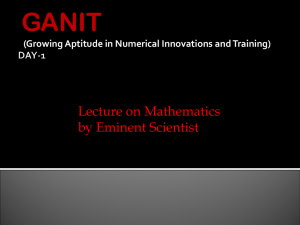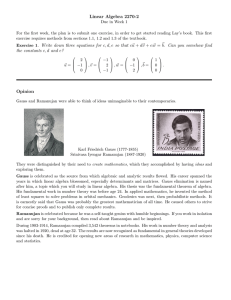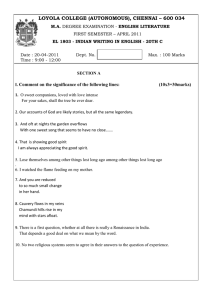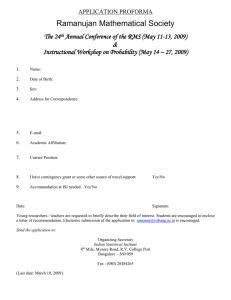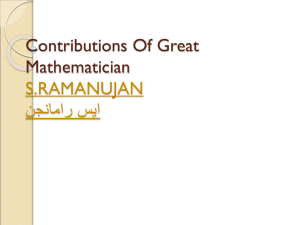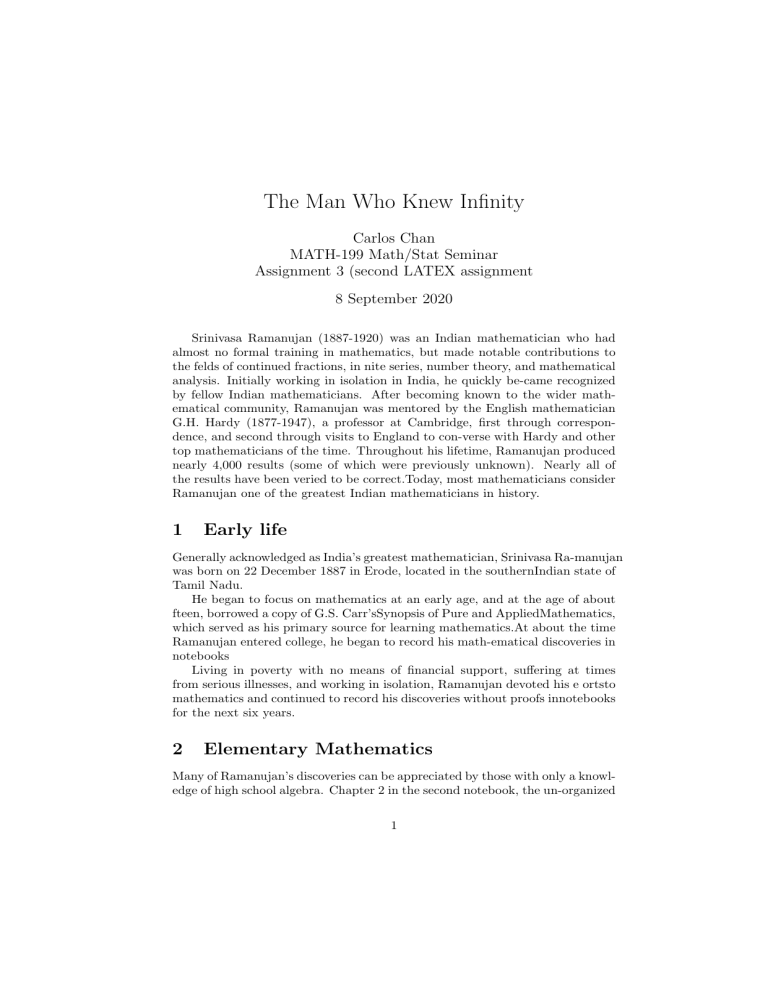
The Man Who Knew Infinity
Carlos Chan
MATH-199 Math/Stat Seminar
Assignment 3 (second LATEX assignment
8 September 2020
Srinivasa Ramanujan (1887-1920) was an Indian mathematician who had
almost no formal training in mathematics, but made notable contributions to
the felds of continued fractions, in nite series, number theory, and mathematical
analysis. Initially working in isolation in India, he quickly be-came recognized
by fellow Indian mathematicians. After becoming known to the wider mathematical community, Ramanujan was mentored by the English mathematician
G.H. Hardy (1877-1947), a professor at Cambridge, first through correspondence, and second through visits to England to con-verse with Hardy and other
top mathematicians of the time. Throughout his lifetime, Ramanujan produced
nearly 4,000 results (some of which were previously unknown). Nearly all of
the results have been veried to be correct.Today, most mathematicians consider
Ramanujan one of the greatest Indian mathematicians in history.
1
Early life
Generally acknowledged as India’s greatest mathematician, Srinivasa Ra-manujan
was born on 22 December 1887 in Erode, located in the southernIndian state of
Tamil Nadu.
He began to focus on mathematics at an early age, and at the age of about
fteen, borrowed a copy of G.S. Carr’sSynopsis of Pure and AppliedMathematics,
which served as his primary source for learning mathematics.At about the time
Ramanujan entered college, he began to record his math-ematical discoveries in
notebooks
Living in poverty with no means of financial support, suffering at times
from serious illnesses, and working in isolation, Ramanujan devoted his e ortsto
mathematics and continued to record his discoveries without proofs innotebooks
for the next six years.
2
Elementary Mathematics
Many of Ramanujan’s discoveries can be appreciated by those with only a knowledge of high school algebra. Chapter 2 in the second notebook, the un-organized
1
portions of the second and third notebooks, and the problems that Ramanujan submitted to the Journal of the Indian Mathematical Society are excellent
sources for these gems.Ramanujan enjoyed finding equal sums of powers. For
example, when a + b + c = 0, then
2(ab + ac + bc)4 = a4 (bc)4 + b4 (ac)4 + c4 (ab)4
In fact, in his third notebook, Ramanujan recorded similar formulas for 2(ab +
ac + bc)2 n, when nf {1, 2, 3, 4}, and wrote ”and so on” to indicate that he
possessed a general procedure for finding such formulas.
Ramanujan was fond of stating intriguing formulas such as
r
q
p
√
π
2 sin( 18 ) = 2 − 2 + 2 + 2 − ...
or
√
3
cos 40◦
+
√
3
cos 80◦
+
√
3
r
cos 20◦
=
3
3√
3
9 − 2.
2
In most instances, these are special cases of more general theorems that he
established
3
Hardy-Ramanujan Number
One of the most famous stories related to Ramanujan is . . .
2
